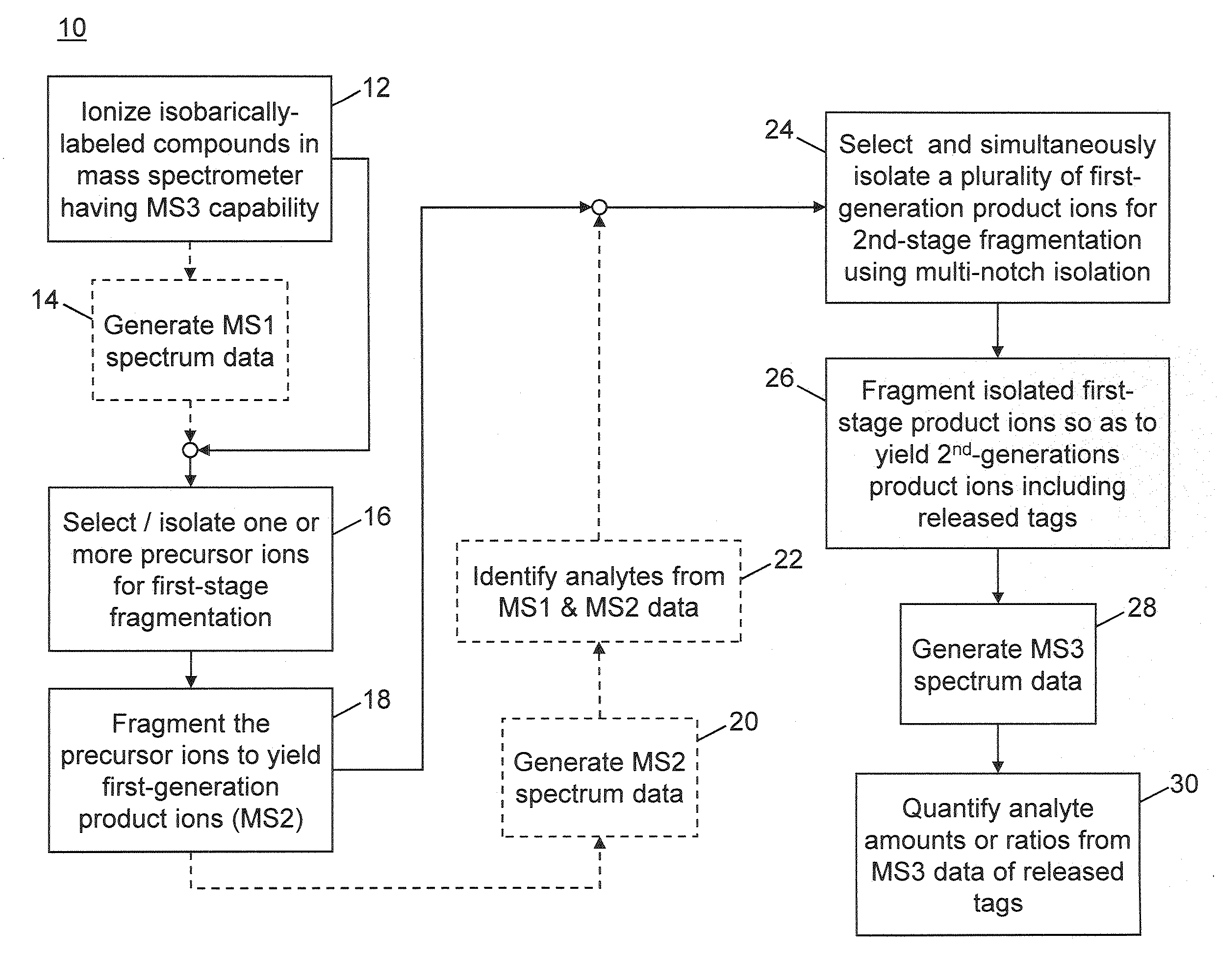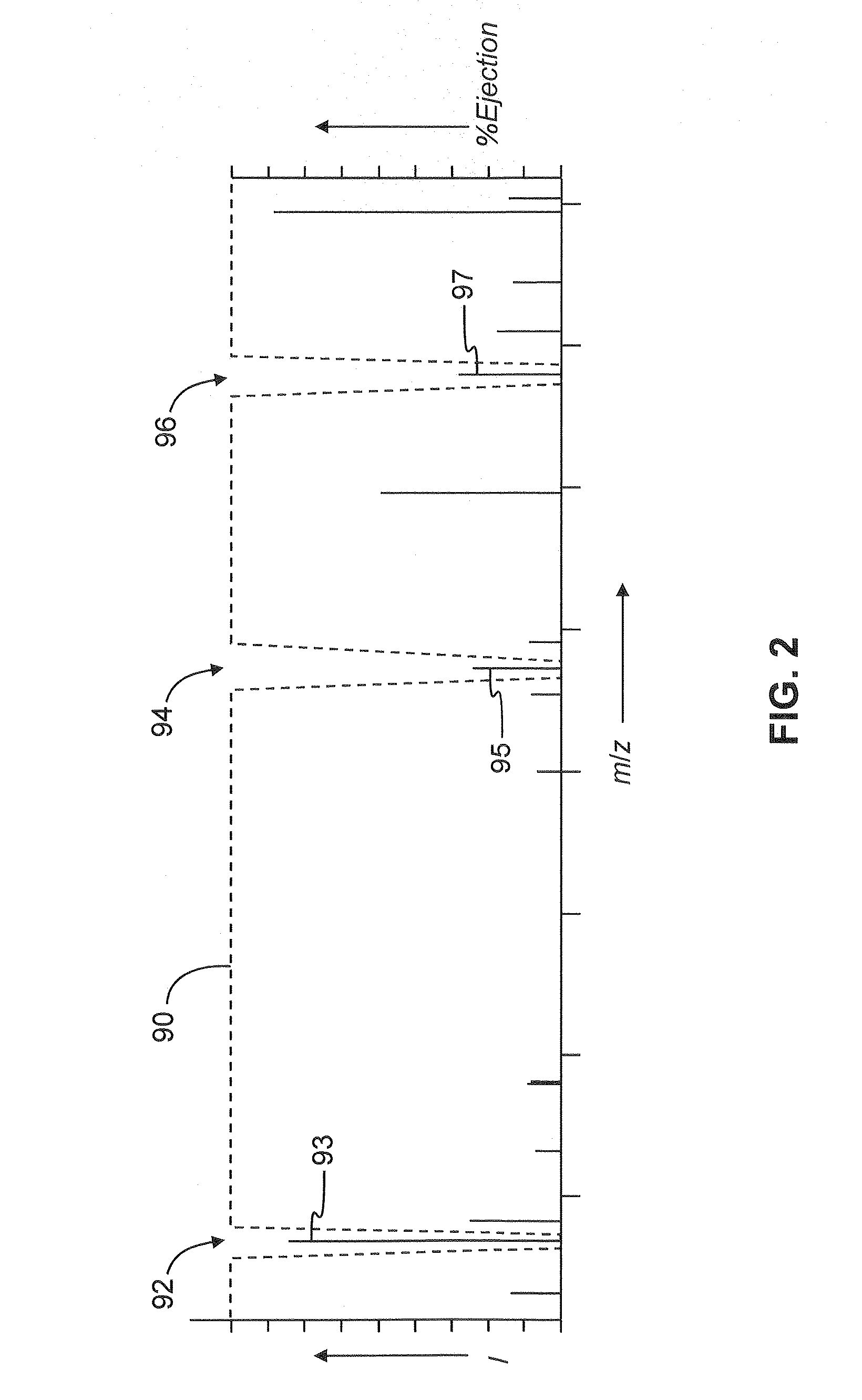Multinotch isolation for MS3 mass analysis
a mass spectrometry and multi-notch technology, applied in mass spectrometers, stability-of-path spectrometers, instruments, etc., can solve the problems of systematic deviation of ratios towards unity, affecting the use of isobaric tags for quantitation of peptides and proteins, and difficult to obtain accurate quantitative values. , to achieve the effect of increasing the sensitivity of the ms3 experiment, no time added to the experiment execution, and improving the sensitivity of th
- Summary
- Abstract
- Description
- Claims
- Application Information
AI Technical Summary
Benefits of technology
Problems solved by technology
Method used
Image
Examples
Embodiment Construction
[0031]The following description is presented to enable a person skilled in the art to make and use the invention, and is provided in the context of a particular application and its requirements. Various modifications to the disclosed embodiments will be readily apparent to those skilled in the art, and the general principles defined herein may be applied to other embodiments and applications without departing from the spirit and the scope of the invention. Thus, the present invention is not intended to be limited to the embodiments disclosed, but is to be accorded the widest scope consistent with the principles and features disclosed herein. It will be understood that certain features and configurations of apparatuses are presented by way of illustrative examples, and should not be construed as limiting the invention to implementation in a specific configuration or environment. To fully appreciate the particular features and advantages of the present invention, the reader is advised...
PUM
| Property | Measurement | Unit |
|---|---|---|
| time delay | aaaaa | aaaaa |
| mass spectrometer | aaaaa | aaaaa |
| mass-to-charge | aaaaa | aaaaa |
Abstract
Description
Claims
Application Information
 Login to View More
Login to View More - R&D
- Intellectual Property
- Life Sciences
- Materials
- Tech Scout
- Unparalleled Data Quality
- Higher Quality Content
- 60% Fewer Hallucinations
Browse by: Latest US Patents, China's latest patents, Technical Efficacy Thesaurus, Application Domain, Technology Topic, Popular Technical Reports.
© 2025 PatSnap. All rights reserved.Legal|Privacy policy|Modern Slavery Act Transparency Statement|Sitemap|About US| Contact US: help@patsnap.com



